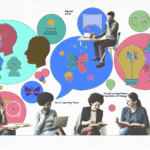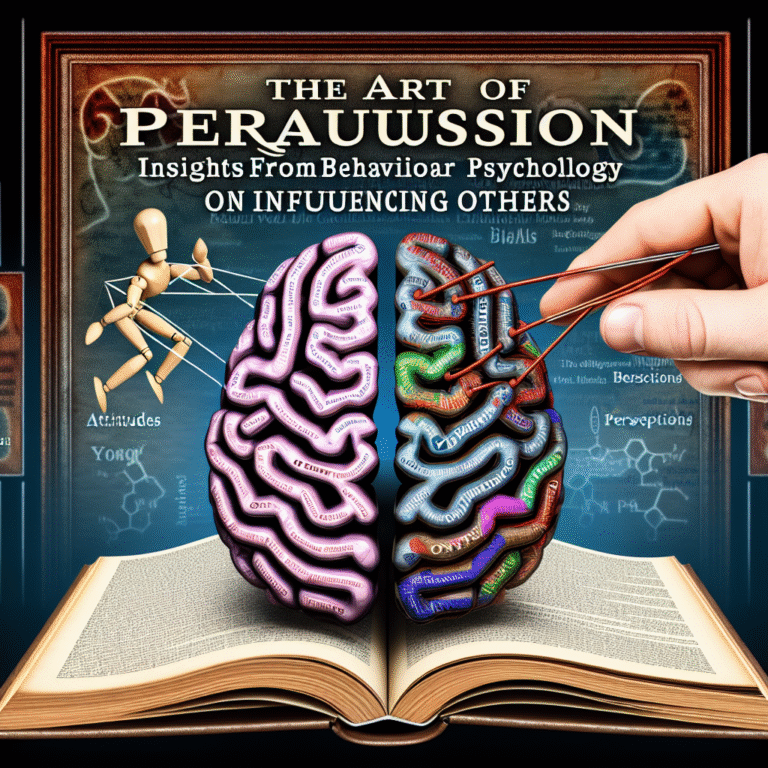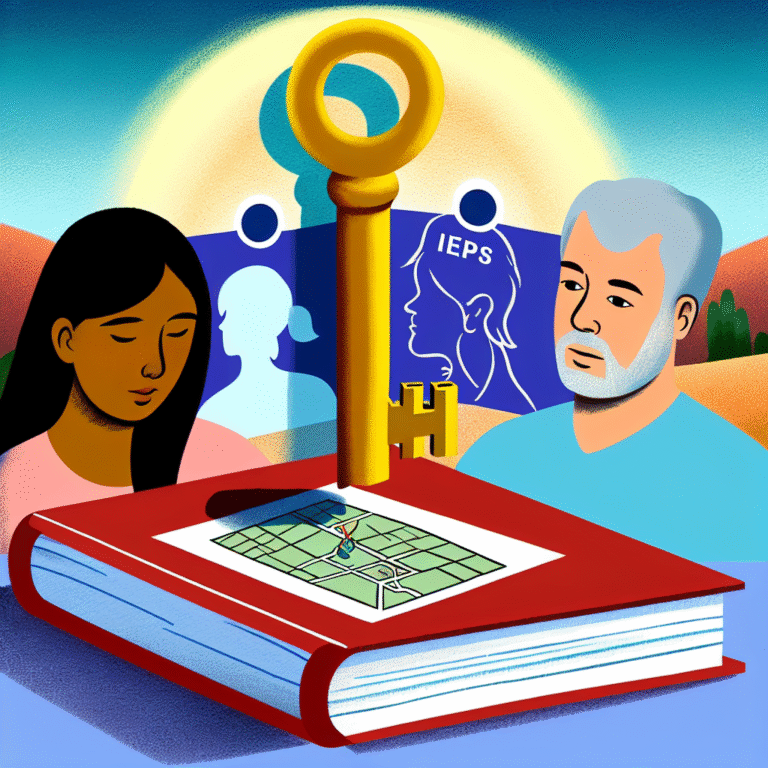
The Ultimate Guide to The Role of Behavioral Psychology in Enhancing Team Collaboration
Introduction
In today’s fast-paced and ever-evolving business landscape, effective collaboration within teams is more crucial than ever. Organizations that prioritize teamwork often outperform their competitors, showcasing the undeniable importance of synergy among members. One of the most powerful tools at our disposal for fostering this collaboration lies within the principles of behavioral psychology. Understanding the role of behavioral psychology in enhancing team collaboration can unlock new pathways for communication, increase productivity, and foster a positive workplace atmosphere.
This article dives deep into how applying behavioral psychology can transform team dynamics, using insightful case studies and practical strategies to highlight its effectiveness.
Understanding Behavioral Psychology
What is Behavioral Psychology?
Behavioral psychology is the scientific study of human behavior, focusing on the ways our actions can be influenced by environmental factors, social interactions, and cognitive processes. This field gives us insight into how individuals think, feel, and behave in a group setting—key components when it comes to team collaboration.
The Relevance of Behavioral Psychology in Team Settings
When integrating behavioral psychology into team dynamics, several principles come into play, influencing how teams communicate and function. Understanding these dynamics can lead to higher levels of engagement and productivity.
Key Principles of Behavioral Psychology
- Reinforcement Theory: Positive reinforcement enhances desired behavior, encouraging team members to collaborate effectively.
- Social Proof: Individuals often look to their peers when forming opinions or making decisions, emphasizing the importance of a cooperative environment.
- Cognitive Dissonance: This occurs when there is a conflict between beliefs and behaviors, and addressing this dissonance can enhance team cohesion.
The Role of Behavioral Psychology in Enhancing Team Collaboration
Fostering Open Communication
Open lines of communication are essential for any successful team. The role of behavioral psychology in enhancing team collaboration starts here. Psychological safety, a concept developed by Amy Edmondson, emphasizes an environment where team members feel comfortable expressing themselves without fear of negative consequences.
Case Study: Google’s Project Aristotle
In Google’s Project Aristotle, researchers sought to measure what makes teams successful. They found that psychological safety was the most significant factor contributing to high-performing teams. By fostering an environment that promotes open communication, Google enhanced collaboration and innovation among team members.
| Key Findings | Project Aristotle |
|---|---|
| Psychological Safety | Most critical factor for effective teamwork |
| Dependability | Team members can rely on each other |
| Structure and Clarity | Well-defined roles improve communication |
Practical Strategies
- Encourage Feedback: Regular feedback builds trust and openness.
- Create Safe Spaces: Meetings should encourage sharing ideas without judgment.
- Use Collaborational Tools: Platforms like Slack or Trello can streamline communication.
Nurturing Trust Among Team Members
Trust is the backbone of any collaborative effort. The role of behavioral psychology in enhancing team collaboration is evident in fostering trust among members. Teams that trust each other are far more likely to share information, which enhances problem-solving.
Case Study: IDEO
IDEO, a design and consulting firm, emphasizes building trust through shared goals and mutual respect. Their approach to collaboration shows how trust can lead to innovative solutions, as team members feel empowered to contribute.
| Trust Mechanisms | IDEO’s Approach |
|---|---|
| Shared Goals | Encourages team alignment |
| Mutual Respect | Fosters a culture of appreciation |
| Collaborative Problem-Solving | Promotes different perspectives |
Practical Strategies
- Team-Building Activities: Engage in exercises that strengthen bonds.
- Empathy Training: Workshops that enhance understanding can boost trust.
- Recognition Programs: Celebrate collaborative efforts and successes.
Leveraging Diversity for Creative Solutions
Diverse teams produce better outcomes due to varied perspectives. Understanding the role of behavioral psychology in enhancing team collaboration can help teams embrace diversity as a strength.
Case Study: Johnson & Johnson
Johnson & Johnson implemented strategies to leverage diversity, focusing on varied backgrounds and experiences. Their commitment has led to innovative solutions and improved market performance, demonstrating the advantages of a collaborative, diverse team.
| Diversity Outcomes | Johnson & Johnson’s Findings |
|---|---|
| Increased Creativity | Diverse ideas lead to unique solutions |
| Expanded Market Reach | Varied perspectives cater to broader audiences |
| Improved Problem-Solving | Diverse teams outperform homogeneous ones |
Practical Strategies
- Inclusive Recruitment: Focus on attracting a wide range of applicants.
- Cross-Functional Teams: Mix teams from different departments.
- Diversity Training: Educate team members on the value of diversity.
Utilizing Behavioral Incentives to Promote Collaboration
Research in behavioral psychology indicates that incentives can significantly motivate teams to collaborate. The role of behavioral psychology in enhancing team collaboration is evident when teams feel rewarded for their efforts.
Case Study: Zappos
Zappos’ unique culture revolves around a strong emphasis on customer service. They utilize behavioral incentives to encourage teamwork and collaboration among employees, leading to higher engagement and customer satisfaction. Their commitment to rewarding collaborative efforts has resulted in a loyal customer base and exceptional employee morale.
| Incentive Strategies | Zappos’ Implementations |
|---|---|
| Performance Bonuses | Rewards for collaborative efforts |
| Peer Recognition | Employees recognized for teamwork |
| Growth Opportunities | Advancement based on team contributions |
Practical Strategies
- Create Reward Systems: Design recognition programs focused on teamwork.
- Align Incentives with Team Goals: Ensure incentives promote collective success rather than individual achievements.
- Encourage Peer Recognition: Create platforms for team members to acknowledge each other’s contributions.
Building Resilience in Teams
Resilience is the ability to adapt and thrive amidst challenges. The role of behavioral psychology in enhancing team collaboration can be harnessed to build resilient teams that can effectively navigate disruptions.
Case Study: Ford Motor Company
Ford cultivated a resilient culture by focusing on team collaboration during economic downturns. They implemented strategies that encouraged teamwork and flexibility, which proved essential in navigating challenges. The focus on collective problem-solving empowered teams to adapt to changing market conditions.
| Resilience Elements | Ford’s Approach |
|---|---|
| Flexibility | Teams adapt roles based on needs |
| Open Communication | Transparency in challenges and solutions |
| Collective Problem-Solving | Fostering teamwork during crises |
Practical Strategies
- Encourage Adaptability: Create a culture where change is embraced rather than feared.
- Focus on Collective Learning: Promote continuous learning and development as a group.
- Support Mental Well-being: Provide resources for stress management and mental health.
Measuring Team Collaboration Effectiveness
To truly understand the role of behavioral psychology in enhancing team collaboration, measuring effectiveness is essential. Implementing metrics and KPIs can provide insights into how well collaboration is functioning within teams.
Case Study: Spotify
Spotify employs a data-driven approach to measure team performance and collaboration. They utilize feedback tools and performance metrics to identify areas of improvement and celebrate successes, demonstrating how data can enhance the understanding of team dynamics.
| Measurement Metrics | Spotify’s Methods |
|---|---|
| Peer Review Systems | Regular feedback from team members |
| Performance Analytics | Data analysis of team output |
| Engagement Surveys | Gathering insights from team members |
Practical Strategies
- Regular Check-ins: Schedule frequent evaluations of team collaboration.
- Implement Feedback Tools: Use surveys and analytics to gather insights on team dynamics.
- Celebrate Milestones: Acknowledge achievements to boost morale.
Conclusion
The importance of collaboration in the workplace cannot be overstated. Understanding and leveraging the role of behavioral psychology in enhancing team collaboration is vital for creating an environment where teams can thrive. From fostering open communication and trust to leveraging diversity and resilience, teams can unlock their full potential by applying these psychological principles.
As organizations look to improve their collaborative efforts, the insights offered here can serve as a foundation for growth. Remember, collaboration is an ongoing journey—one that requires nurturing, understanding, and adaptability.
FAQs
1. What is the main focus of behavioral psychology in teamwork?
Behavioral psychology primarily focuses on understanding how individual behaviors influence group dynamics and how teams can be structured to promote effective collaboration.
2. How can I create a psychologically safe environment for my team?
Encourage open communication, accept vulnerability, and promote a culture of respect and empathy.
3. What are the signs of effective team collaboration?
Key indicators include high engagement levels, successful completion of projects, mutual trust among members, and innovative problem-solving.
4. How can incentives boost team collaboration?
Incentives motivate individuals to work towards common goals, fostering a team-oriented mindset and enhancing collective efforts.
5. What strategies can improve team resilience?
Encouraging adaptability, promoting collective learning, and supporting mental well-being are key strategies for building resilience within teams.
By embracing the principles discussed in this article, organizations can start on their journey to redefining teamwork, enhancing collaboration, and ultimately achieving greater success.














